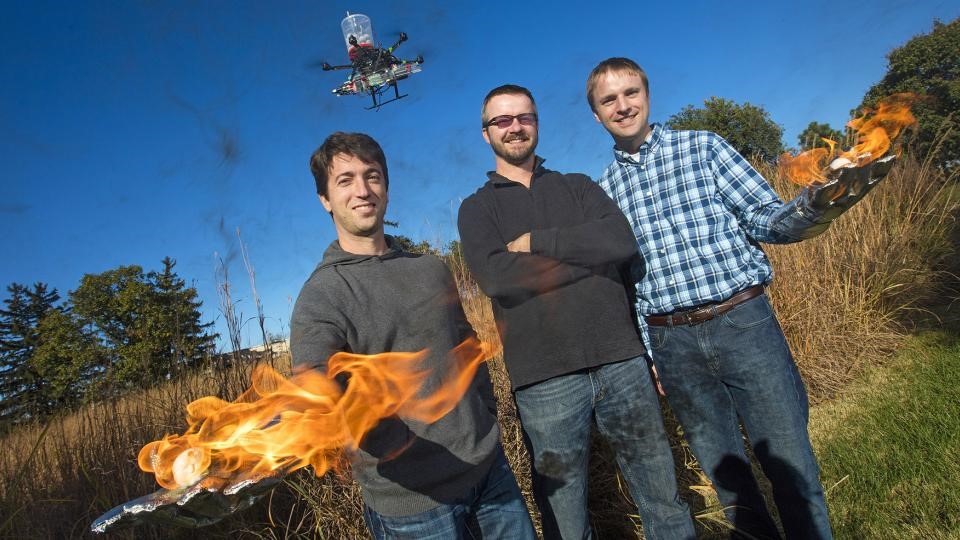
Engineers from the University of Nebraska-Lincoln developed a fireball dropping unmanned aerial vehicle to aid wild land firefighting and conservation efforts. Typically, firefighting and “fireball-dropping” are two phrases that have no business being in the same sentence, but controlled burning is actually a commonly used land management practice for deterring wildfires. In fact, part of the reason that the American Great Plains and California have suffered from an increased number of fires of late is because of the decline of the use of fire for managing the ecosystem.
The newly patented drones provide a low-risk, easy to maintain solution that’s capable of operating with limited supervision at a much lower cost than a helicopter; it’s also much safer than igniting prescribed burns by hand or using all-terrain vehicles in remote areas.
“The idea is to provide a safe mechanism for people to perform fire management tasks with less risk and higher efficiency,” said Sebastian Elbaum, a computer science and engineering professor and drone researcher.
Essentially, drones carrying a payload of balls filled with potassium permanganate powder fly to target a location and inject the balls with liquid glycol before immediately ejecting them into a designated plot of land. A little while after the balls land, a chemical reaction takes hold, causing the balls to burst into flames.
This action is then repeated until the software governing the drones’ flight patterns has fulfilled its flight parameters; the drones can be programmed to fly over a precise pattern or in a straight line to prevent them from flying into off-limits territory or in an area that’s too windy to use.
With the successful completion of indoor prototyping tests, the team now seeks to move to next phase by gaining approval from the Federal Aviation Administration and local fire departments to conduct a controlled field test.
“Unmanned aerial devices have the potential to carry out key resource management strategies and could help us deal with something as big as the international increase in severe wildfires,” said Dirac Twidwell, the team’s range ecology expert and faculty member in the Department of Agronomy and Horticulture.
Such methods of fire fighting in which select grasslands are burned off are widely recognized as effective conservation tools not just for reducing the risk of wildfires, but also for eliminating invasive species and restore native plants.
Source: news.UNL.edu
Advertisement
Learn more about Electronic Products Magazine





